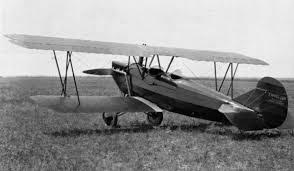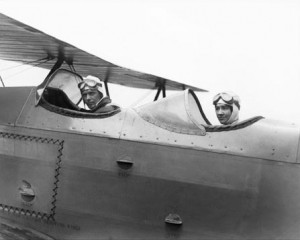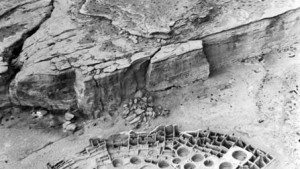214th Review Oblique Views: Aerial Photography and Southwest Archaeology- Charles A. Lindbergh (Photographer), Heisey Adriel (Photographer), Adriel Heisey (Photographer)
Aerial photography is commonplace today. While drones (unmanned aerial vehicle, UAV) may be the latest embodiment of this form of  photography, aerial photography dates to the nineteenth century. The most common and practical form of aerial photography is performed by helicopters and airplanes. Yet the earliest forms of aerial photography was achieved by utilizing balloons by the Frenchman, Gaspard-Felix Tornachon, in 1858. E.D. Archibald, a British meteorologist, first took aerial pictures using a kite in 1882. Throughout WWI, aerial photography was useful for many reasons, including surveying troop movement and espionage.
photography, aerial photography dates to the nineteenth century. The most common and practical form of aerial photography is performed by helicopters and airplanes. Yet the earliest forms of aerial photography was achieved by utilizing balloons by the Frenchman, Gaspard-Felix Tornachon, in 1858. E.D. Archibald, a British meteorologist, first took aerial pictures using a kite in 1882. Throughout WWI, aerial photography was useful for many reasons, including surveying troop movement and espionage.
After Charles Lindbergh’s 1927 solo transatlantic flight from New York to Paris in his Ryan NYP airplane, better known as The Spirit of St. Louis, the young aviator began to scout air routes for the newly founded Transcontinental Air Transport (TAT) in 1928. In 1930, TAT merged with Western Air Express and became known as Transcontinental & Western Air, and later Trans World Airlines (TWA). Lindbergh’s hope was to discover suitable routes between the west and east coasts that did not require flying over the Rocky Mountains. During 1929, Lindbergh worked as a technical advisor for TAT. Lindbergh explored possible routes through Arizona and New Mexico.
The Lone Eagle’s – as Lindbergh is often called – connection to Southwestern archaeology in the Four Corners region actually came about when he discovered several Mayan ruins in the Yucatán that captured his imagination. Upon his return to Washington, D.C. Lindbergh went to the Smithsonian Institute to inquire about the ruins he saw.
 In his autobiography entitled Autobiography of Values, a work that is as much personal as it is a repertoire of Lindbergh’s philosophy of life, Lindbergh comes across as a man with a fertile imagination and great zest for knowledge. At the Smithsonian, he was referred to the newly created Carnegie Institution. The latter was a think tank that supported Southwestern archaeology. This is how Charles Lindbergh met archaeologist, Alfred V. Kidder, who was working in the Four Corners region. At that time, the existence of the Ancient Pueblo People, believed to have lived in the Southwest from 900 A.D. to about 1150 A.D., had gained the attention of archeologists.
In his autobiography entitled Autobiography of Values, a work that is as much personal as it is a repertoire of Lindbergh’s philosophy of life, Lindbergh comes across as a man with a fertile imagination and great zest for knowledge. At the Smithsonian, he was referred to the newly created Carnegie Institution. The latter was a think tank that supported Southwestern archaeology. This is how Charles Lindbergh met archaeologist, Alfred V. Kidder, who was working in the Four Corners region. At that time, the existence of the Ancient Pueblo People, believed to have lived in the Southwest from 900 A.D. to about 1150 A.D., had gained the attention of archeologists.
Lindbergh’s black and white aerial photography of the Southwest offered Kidder a new and expansive vista of ruins that were extremely difficult to explore due to their isolation. In addition, this new adventure also gave the shy and world-famous Lindbergh an opportunity to relax away from the new-found acclaim that made him uncomfortable.
Lindbergh and his wife Anne flew a two-seat Curtiss Falcon biplane. While Lindbergh took pictures of the Southwest, Anne flew the open-cockpit airplane. Their photos of Pueblo Bonito in Chaco Canyon are impressive. The photographs put in perspective the vast remoteness of that unique American landscapes, the layout of the great houses, and the immense size of the kivas – places for communal ritual worship. Adjacent to Pueblo Bonito, Chetro Ketl, is nestled on three sides by the mesa that overlooks Chaco Canyon. Equally impressive are the photographs that the Lindbergh’s took in Arizona of White House Ruin in Canyon de Chelly, Mummy Cave in Canyon del Muerto, the Grand Canyon and Meteor Crater in the area of Winslow, Arizona.
Oblique Views: Aerial Photography and Southwest Archaeology is an intensive labor of love published by the Museum of New Mexico Press. The project brings together several essays on Southwestern archaeology, which set out to preserve the 198 photographic negatives of Lindbergh’s aerial photography. The project involved re-photographing the areas that Lindbergh photographed in 1929. Pilot and photography, Adriel Heisey, painstakingly matched Lindbergh’s black and white photography to color photos that he took of the same area. The result is a valuable record of Southwestern archaeology and its environs.
For people who have explored this region, the struggle for existence that the pre-Columbian Pueblo People faced in that unforgiving landscape  and appreciation for the life and death struggle of the human race through time, become heighten. The colossal distances that the Chacoans travelled in order to attain water and the inherent difficulty of cultivating arid land can never be fully captured from the air. Though, aerial photography does allow the fertile mind a measure of perspective.
and appreciation for the life and death struggle of the human race through time, become heighten. The colossal distances that the Chacoans travelled in order to attain water and the inherent difficulty of cultivating arid land can never be fully captured from the air. Though, aerial photography does allow the fertile mind a measure of perspective.
The culture of the Chacoans, while far from being fully understood by modern people, remains a symbol of the universal pangs of life and death of people in different civilizations. One glaring detail about the Ancient Pueblo People of the American Southwest is that many of their dwelling places were nestled in openings in the mesa face, or were built against the backdrop of mesas – Spanish word for “table,” and thus meaning tableland – that served as protection. Aerial photography easily bears this out. Clearly, some other group of people threatened the existence and well-being of the Ancient Pueblo People. Their plight to survive is a universal lesson that informs human history.











Leave a Reply